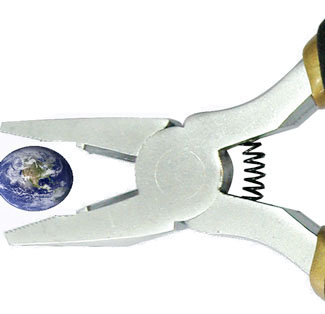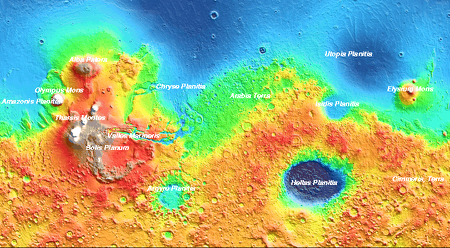One Model for a New World Economy
If the Industrial-Era economic system is, in fact, on its last legs, it would be useful to think through some of the possible post-capitalism models that might emerge.
I don't think we have enough early indicators to create a solid vision, so anything we talk about will have to be something of a thought experiment. What kinds of constraints would we face? What kinds of demands? Consider the following, then, at best a scenario sketch.
Resilience Economics
[Update: To clarify, as requested: this is written as a scenario set in the unspecified (but probably ~late 2020s) future, from the point of view of someone living in that future.]The trigger was a phrase we'd all become sick of: "Too Big to Fail." The phrase had moved quickly from sarcasm to cliché, but ended up as the pole star for what to avoid. Any economy that enabled the creation of institutions that were too big to fail -- that is, whose failure would threaten to collapse the system -- could never be thought of as resilient. And, as the early 21st century rolled along, resilience is what mattered, in our environment, in our societies, and increasingly in our economics.
Traditional capitalism was, arguably, driven by the desire to increase wealth, even at the expense of other values. Traditional socialism, conversely, theoretically wanted to increase equality, even if that meant less wealth. But both 19th/20th century economic models had insufficient focus on increasing resilience, and would often actively undermine it. The economic rules we started to assemble in the early 2010s seek to change that.
Resilience economics continues to uphold the elements of previous economic models that offer continued value: freedom and openness from capitalism at its best; equality and a safety net from socialism's intent. But it's not just another form of "mixed economy" or "social democracy." The focus is on something entirely new: decentralized diversity as a way of managing the unexpected.
Decentralized diversity (what we sometimes call the "polyculture" model) means setting the rules so that no one institution or approach to solving a problem/meeting a need ever becomes overwhelmingly dominant. This comes at a cost to efficiency, but efficiency only works when there are no bumps in the road. Redundancy works out better in times of chaos and uncertainty -- backups and alternatives and slack in the system able to counter momentary failures.
It generates less wealth than traditional capitalism would, at least when it was working well, but is far less prone to wild swings, and has an inherent safety net (what designers call "graceful failure") to cushion downturns.
Completely transactional transparency also helps, giving us a better chance to avoid surprises and to spot problems before they get too big. The open-source folks called this the "many eyes" effect, and they were definitely on to something. It's much harder to game the system when everyone can see what you're doing.
Flexibility and collaboration have long been recognized as fundamental to resilient systems, and that's certainly true here. One headline on a news site referred to it as the "LEGO economy," and that was pretty spot-on. Lots of little pieces able to combine and recombine; not everything fits together perfectly, but surprising combinations often have the most creative result.
Lastly, the resilience economy has adopted a much more active approach to looking ahead. Not predicting, not even planning -- no "five year plans" here. It's usually referred to as "scanning," and the focus is less on visions of the future than on early identification of emerging uncertainties. Resilience economists are today's foresight specialists.
What does this all look like for everyday people? For most of us, it's actually not far off from how we lived a generation ago. We still shop for goods, although the brands are more numerous and there are far fewer "big players" -- and those that emerge tend not to last long. People still go to work, although more and more of us engage in micro-production of goods and intellectual content. And people still lose their jobs and suffer personal economic problems... but, again, there's far less risk of economic catastrophe, and some societies are even starting to experiment with a "guaranteed basic income" system.
Is it perfect? By no means. We're still finding ways in which resilience economics isn't working out as well as past approaches, and situations where a polyculture model doesn't provide the kinds of results that the old oligarchic/monopoly capitalist model could. But those of us who remember the dark days of the econopalypse know where non-resilient models can lead, and would rather fix what we've made than go back to the past.
Okay, I'll be the first to admit that this isn't as complete a picture as we'd like, but the core idea -- that resilience becomes the driver of new economics -- strikes me as very plausible. It's a pretty technologically conservative scenario; no AI-managed "just-in-time socialism" here, nor any nano-cornucopian visions. But it's very much the kind of model we could create in the aftermath of a disastrous economic crisis, in a world where the importance of resilience is becoming increasingly evident.



 That's the title of the talk I'm giving this Sunday (March 22) at the "
That's the title of the talk I'm giving this Sunday (March 22) at the " I've been writing about geoengineering since 2005, and have even published a short book on the subject (
I've been writing about geoengineering since 2005, and have even published a short book on the subject ( Happy Happy Joy Joy edition.
Happy Happy Joy Joy edition.


